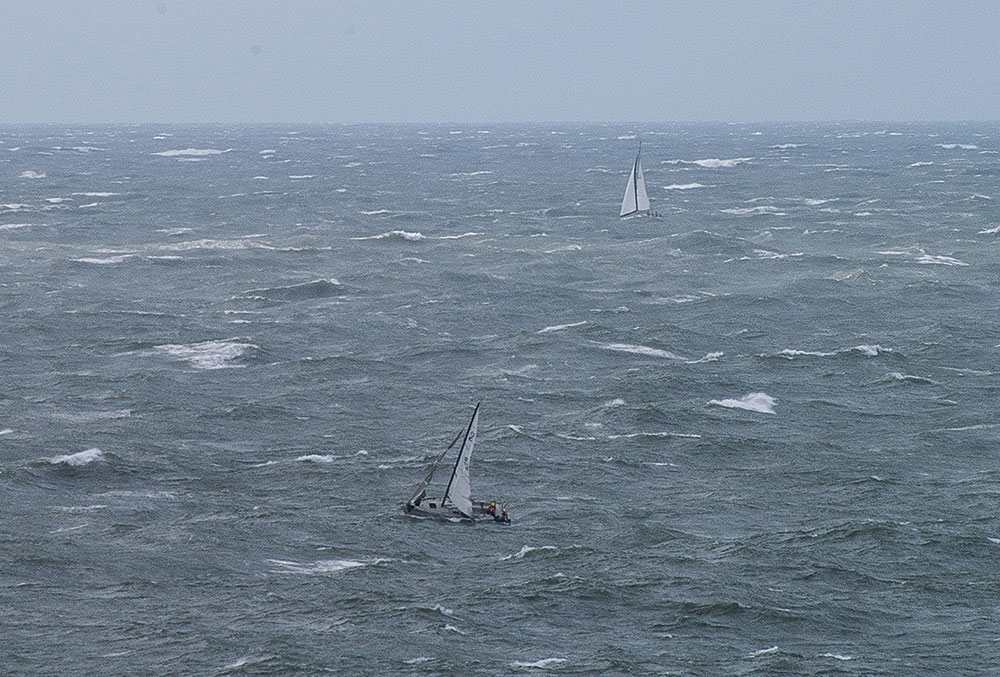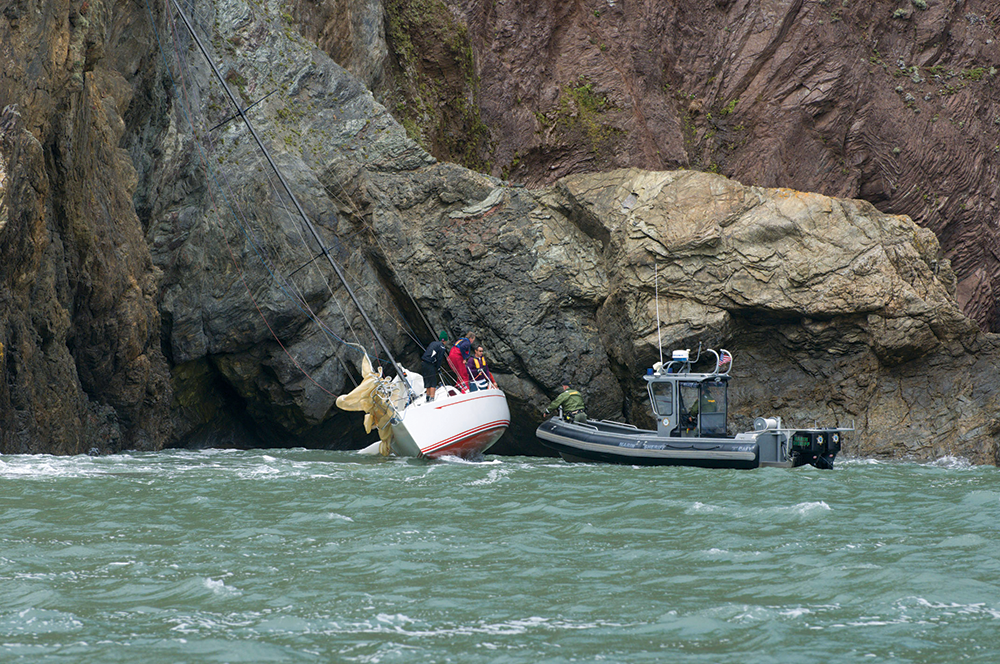Rendering assistance at sea
If the time comes when you need to come to the aid of a fellow sailor, know what to do and what not to do

Imagine yourself and your crew are spending a relaxing afternoon sailing or you are battling a storm to make it to the next port. Then without warning you find yourself in a position to render assistance to another sailor at sea. As sailors we all understand we have an ethical and legal obligation to assist. It’s the first rule in the Racing Rules of Sailing (RRS 1.1), the International Convention Safety of Life at Sea addresses this (SOLAS chapter 5,33) and United States law requires it (46 U.S.C. Section 2304).
But what are the considerations as you approach the scene? How much help can you offer? Who else is available to help? What measures are necessary to protect the individuals involved and safety of the boats? How do you avoid making the situation worse and possibly putting yourself and others in harm’s way?
The first priority is the safety of the sailors, both on your boat and the boat you are assisting. The boats and other property are secondary considerations. As you approach the boat, several things will be happening simultaneously. First, you should notify the Coast Guard or local marine authorities of the situation you are approaching. It’s important to start communication with authorities early and maintain communication as the nature of your aid unfolds. Give them any details you can, including whether you’ve established communication with the other boat either by VHF radio or in person, the severity of the situation, whether the boat is just disabled or if it is a life-threatening emergency.
Keep in mind that on the water a non-distress situation can quickly become a true distress event. The crews of both boats should be wearing PFDs. A crewmember can slip and fall even in the calmest seas, and this will only compound the situation.
The actions you take will depend largely on the type of emergency you are helping with. A disabled boat is one that needs assistance whether it is docked, moored, anchored, aground, adrift or underway. A boat in distress means action must be taken to prevent loss of life whether real or perceived. Some situations that can disable a boat are engine failure, slowly taking on water, minor injuries, seasickness, dismasting, grounding and loss of electrical and battery power. Severe situations are life-threatening and require a vessel in distress alert. Some examples would be capsizing, major medical situations, sinking, fire or hypothermia.

If you are prepared to handle emergencies on your boat, chances are good that you will have the skills and tools to help a fellow sailor in trouble. Go through safety training with your crew. Practice crew overboard drills, know the location of safety equipment, and attend a US Sailing Safety at Sea Seminar.
As you approach the boat stay alert for people in the water. This can be difficult especially at night and in heavy seas. It is also crucial to be watchful for things that may cause harm to your own boat; a second disabled boat will only make a bad situation much worse. Lines from the disabled boat and floating debris can quickly become entangled in your prop. Standing rigging in the water can damage your hull below the waterline.
Sea state, wind and darkness all dictate a cautious approach. Wind, waves, tides and currents may carry both boats into hazardous waters. Determine the best way to approach the vessel and, in rough and windy conditions, avoid getting too close. Do not tie boats together as boats can damage each other and arms and legs can become caught between the hulls. If people aboard the boat in distress need to abandon to your boat, the best way may be for the crew to get into the water, dinghy or life raft to make the transfer. A Lifesling is a great piece of equipment to assist you in bringing sailors to your boat. Remember to put the engine in neutral and disengage the prop as a person in the water approaches your boat.
A boat on fire will most likely require abandonment unless it is extinguished immediately. When assisting a burning boat, approach it from the upwind side while watching for people in the water. Once a boat is engulfed in flames do not attempt to fight the fire. Rescue the people and move away quickly as there is a risk of explosion.
Once you’ve rescued sailors from another boat, immediately offer as much medical assistance as you feel comfortable performing, but get permission from the person being treated if possible. Be very careful moving severely injured victims. Do not transfer a person with severe injuries to another boat unless there is an eminent danger to their life if they stay aboard the boat. If you must transfer, do so with great caution, supporting the victim’s head, neck and back as much as possible. A cabin door or floorboard can be used as a makeshift stabilization board if necessary.
Remember that situations change and deteriorate rapidly at sea. While assisting another boat and its crew, it’s important to be alert for changes in the condition of the people, boat and weather.
Towing a disabled boat is something that should be agreed upon by the skippers of both boats. When towing, make sure to use a proper line of appropriate size and stretchiness—this is not the time to bring out the Vectron spinnaker sheets. Make sure the tow line is attached to strong points on each boat. Before the tow starts, agree upon a method of communication with the other boat.
Keep in mind that another sailor may decline outside assistance from you. Rather than be offended, pull away from the boat and stand by as they get their problem under control but keep authorities apprised of the situation. If the Coast Guard or a towing company is coming to help, stand by until they arrive and your help is no longer needed.
The nature of sailing requires all participants to render aid to fellow sailors in need. This underlying principal makes sailing one of the safest activities on water. Just remember that the priority is to save people; boats are secondary.

Comments